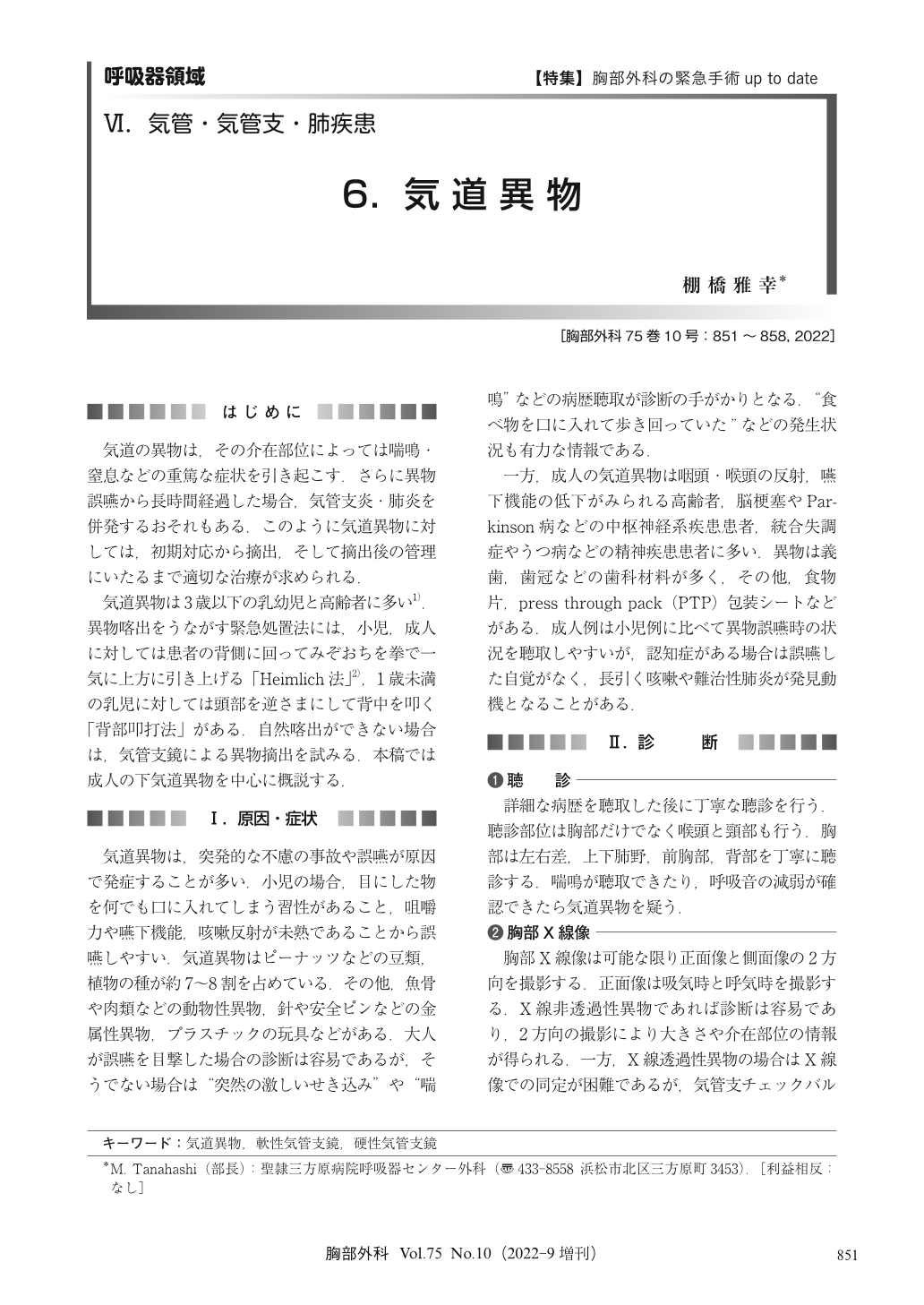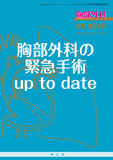Japanese
English
- 有料閲覧
- Abstract 文献概要
- 1ページ目 Look Inside
- 参考文献 Reference
気道の異物は,その介在部位によっては喘鳴・窒息などの重篤な症状を引き起こす.さらに異物誤嚥から長時間経過した場合,気管支炎・肺炎を併発するおそれもある.このように気道異物に対しては,初期対応から摘出,そして摘出後の管理にいたるまで適切な治療が求められる.
Foreign body aspiration is most common in infants of <3 years of age and the elderly. Peanuts and plant seeds account for approximately 70~80% of airway foreign bodies in children, while dental materials (e.g., dentures and crowns) are common in adults. Tracheobronchial foreign bodies are diagnosed by detailed history taking, careful auscultation, chest radiography, and computed tomography (CT). Chest radiography should be performed in frontal and lateral views. CT is useful for assessing the presence of a foreign body, the site of involvement, and secondary changes (e.g., pneumonia or atelectasis). In urgent cases with severe dyspnea, life-saving measures, including endotracheal intubation, administration of oxygen, and securing an intravenous line should be performed first, followed by immediate removal. Removal is often performed with a rigid bronchoscope in children, and a flexible bronchoscope under local anesthesia in adults. When removal by flexible bronchoscope is difficult, a rigid bronchoscope is used. Surgical removal is considered when bronchoscopic removal is difficult or associated with a high risk of complications (e.g., major bleeding or bronchial perforation). After removal, pneumonia is likely to occur, so antibiotic agents should be administered. For airway foreign bodies, appropriate and immediate treatment is required from the diagnosis to removal and post-removal management.

© Nankodo Co., Ltd., 2022


